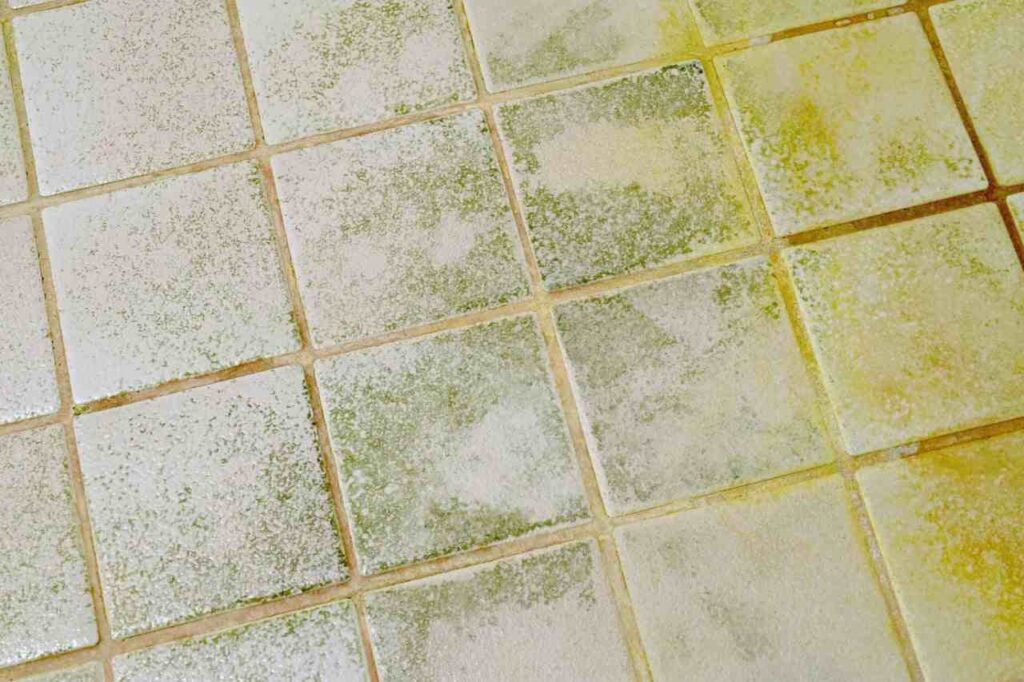Blogs
The Connection Between Water Damage and Allergies in Plano
Welcome to Plano, where the Texan sun and vibrant community make it a great place to call home. But amidst the bustling life, there’s a silent threat lurking – water damage. Beyond the visible stains and structural issues, water damage in Plano is intricately linked to a less-discussed menace: allergies. In this exploration, we uncover the concealed health hazards that water damage brings. From mold spores to mycotoxins, we’ll navigate the connection between water damage and allergies, shedding light on how something as innocuous as a leak can impact the well-being of Plano residents. In this blog post, Intensa Dry Water Damage Restoration dives to the hidden world beneath the surface.
Understanding Water Damage

Water damage is a pervasive problem in Plano, often stemming from floods, leaks, or plumbing issues. The aftermath of such incidents can extend far beyond visible damage to walls and floors, infiltrating hidden spaces and fostering conditions conducive to mold growth. Mold, a common consequence of water damage, releases spores into the air that can become potent allergens, setting the stage for respiratory issues and allergic reactions.
Water damage, a pervasive issue in many regions, poses significant threats beyond its visible manifestations. Whether it’s caused by floods, leaks, or plumbing issues, the aftermath extends far beyond mere structural damage. Insidious mold growth, a common consequence, releases airborne spores that become potent allergens. Understanding the multifaceted nature of water damage is crucial; it goes beyond aesthetics, impacting indoor air quality and, ultimately, the health of occupants. Vigilance and prompt action are key to mitigating its far-reaching consequences.
Mold as a Culprit
Mold thrives in damp and humid environments, making water-damaged homes in Plano an ideal breeding ground. As mold spores disperse into the air, occupants unknowingly inhale these microscopic particles, triggering allergic reactions in susceptible individuals. Common symptoms include sneezing, coughing, nasal congestion, and itchy or watery eyes. Prolonged exposure to mold allergens can exacerbate existing respiratory conditions, such as asthma, and even lead to the development of new allergies.
Mold, a ubiquitous organism, becomes a menacing culprit when it takes residence in the aftermath of water damage. Thriving in damp, humid environments, mold releases microscopic spores into the air, triggering a cascade of health issues. These airborne spores can infiltrate the respiratory system upon inhalation, particularly affecting individuals with allergies or asthma. Common symptoms include sneezing, coughing, and eye irritation. Prolonged exposure to mold allergens can exacerbate respiratory conditions, leading to chronic health problems.
However, mold’s impact extends beyond immediate health concerns. Some molds produce mycotoxins, toxic substances that add an additional layer of danger. The ingestion or inhalation of mycotoxins has been associated with a range of health problems, from headaches and dizziness to more severe complications, underscoring the importance of addressing mold growth promptly in water-damaged environments.
Impact on Indoor Air Quality
The quality of indoor air is crucial to maintaining good health, and water damage significantly compromises this aspect of living spaces in Plano. Beyond mold, water damage can introduce other allergens such as dust mites and bacteria. The accumulation of these pollutants can create an unhealthy indoor environment, particularly in homes where proper ventilation is lacking. Residents may find themselves grappling with persistent respiratory discomfort, unknowingly attributing it to the very air they breathe within their homes.
Water damage not only compromises the structural integrity of homes but also significantly impacts indoor air quality. Mold, dust mites, and bacteria, thriving in the aftermath of water damage, become airborne particles that occupants unknowingly breathe in. This compromised indoor air quality can lead to respiratory discomfort and exacerbate existing allergies and asthma. Proper ventilation and prompt remediation efforts are crucial to ensure that the air within homes in Plano remains a healthy environment, free from the allergens and pollutants introduced by water damage.
Hidden Dangers: The Role of Mycotoxins
The dangers associated with water damage go beyond the visible and the tangible. Mold can produce mycotoxins, toxic substances that can have severe health implications. While not all molds produce mycotoxins, the presence of these compounds in water-damaged environments can elevate health risks. Exposure to mycotoxins has been linked to a range of health issues, including headaches, dizziness, and fatigue, further emphasizing the intricate connection between water damage and adverse health outcomes.
Hidden dangers lurk beneath the surface of water-damaged environments, and the role of mycotoxins adds a layer of complexity to the health risks associated with mold. Some molds have the ability to produce mycotoxins, which are toxic substances known to have severe health implications for those exposed. These mycotoxins can contaminate the air, exacerbating the health hazards posed by water damage.
Ingestion or inhalation of mycotoxins has been associated with a range of health problems, from common symptoms like headaches and dizziness to more severe complications, especially in individuals with compromised immune systems. As the hidden dangers of mycotoxins underscore, addressing water damage promptly and thoroughly is not only essential for preventing allergic reactions but also for mitigating the potential long-term health risks associated with these toxic compounds.
Understanding the hidden dangers associated with mycotoxins highlights the critical importance of water damage cleanup and mitigation services. In the aftermath of water damage, especially when mold growth is involved, mycotoxins can become a pervasive threat to indoor air quality. Professional cleanup services not only address visible damage but also tackle hidden issues like mold and mycotoxins. Expertise in thorough remediation is crucial to ensure the complete elimination of these toxic compounds, safeguarding the health of occupants. Integrating water damage cleanup and mitigation services becomes an integral component in creating a safe and healthy living environment, effectively combating the concealed dangers posed by mycotoxins.
Children and Vulnerable Populations

The impact of water damage on health is particularly concerning for children and individuals with compromised immune systems. Children, with their developing respiratory systems, may be more susceptible to the effects of mold and allergens. Similarly, individuals with pre-existing health conditions, such as allergies or asthma, face an increased risk of exacerbated symptoms when exposed to the allergens unleashed by water damage. Addressing water damage promptly is essential to safeguard the well-being of these vulnerable populations.
Children and vulnerable populations bear a disproportionate burden when it comes to the health impacts of water damage. The developing respiratory systems of children make them particularly susceptible to the presence of molds and allergens in water-damaged environments, potentially leading to more severe health consequences. Additionally, individuals with compromised immune systems, such as those with pre-existing allergies or asthma, face an elevated risk of exacerbated symptoms. The need for swift attention to water damage and comprehensive remediation efforts becomes paramount to safeguard the well-being of these vulnerable groups and ensure a healthy living environment for all.
Prevention and Remediation Strategies
Given the profound implications of water damage on health, proactive measures are crucial. Plano residents can adopt various strategies to prevent and remediate water damage in their homes. Regular inspection of plumbing systems, prompt repair of leaks, and maintaining optimal indoor humidity levels can deter the onset of water damage. In cases where water damage has occurred, swift remediation efforts, including thorough drying and mold removal, are imperative to prevent the escalation of health risks.
Preventing and mitigating water damage in Plano involves a comprehensive approach that often extends to reconstruction services. Proactive measures, such as routine plumbing inspections and prompt leak repairs, play a vital role in preventing water damage. In the unfortunate event of water damage, swift and effective remediation strategies become essential. Reconstruction services become particularly crucial during this phase, as they encompass not only repairing structural damage but also addressing hidden issues like mold growth. Combining preventive actions with reliable reconstruction services ensures that homes in Plano not only recover from water damage but are fortified against future threats, creating resilient living spaces for the community.
FAQs
Can water damage cause allergies?
Long after waters have receded, flood waters can leave behind chemicals, bacteria, viruses and mold. These can create long-term health issues if you have asthma and allergies.
How do you know if water damage is caused by mold?
- Smell. One way you can sometimes tell is by the smell. Occasionally you can smell mold before you see it.
- Shape. Water damage will form in a shape that resembles water droplets.
- Shade. Water damage is usually visible because the minerals in the water leave a stain.
What kills mold from water damage?
Use a bleach solution of no more than 1 cup (8 ounces) household laundry bleach per 1 gallon of water to kill mold on surfaces.
How do you know if water damage is serious?
Mold growth, discoloration, swelling, or musty odors are common indicators of water damage that might become noticeable over time. It’s important to address water intrusion promptly to mitigate further damage and minimize potential health risks associated with mold growth.
What happens if you ignore water damage?
If you don’t repair water damage and it gets worse, it could cause structural damage to your property. In fact, it could already have had structural consequences for your home. The one thing you don’t want to see is cracks in the walls of your property or in the foundations because it’s not a very good sign.
Conclusion
In conclusion, the connection between water damage and allergies in Plano unveils a complex interplay between environmental factors and public health. Beyond the visible structural concerns, the insidious presence of mold and mycotoxins poses a serious threat to residents, particularly vulnerable populations. Swift preventive measures, regular inspections, and efficient remediation efforts are essential to safeguard the well-being of Plano’s community. Recognizing the hidden dangers beneath the surface is paramount for creating resilient homes. By fostering awareness, implementing proactive strategies, and incorporating reconstruction services when needed, residents can ensure a healthier, safer, and more secure living environment in the face of water damage challenges.

